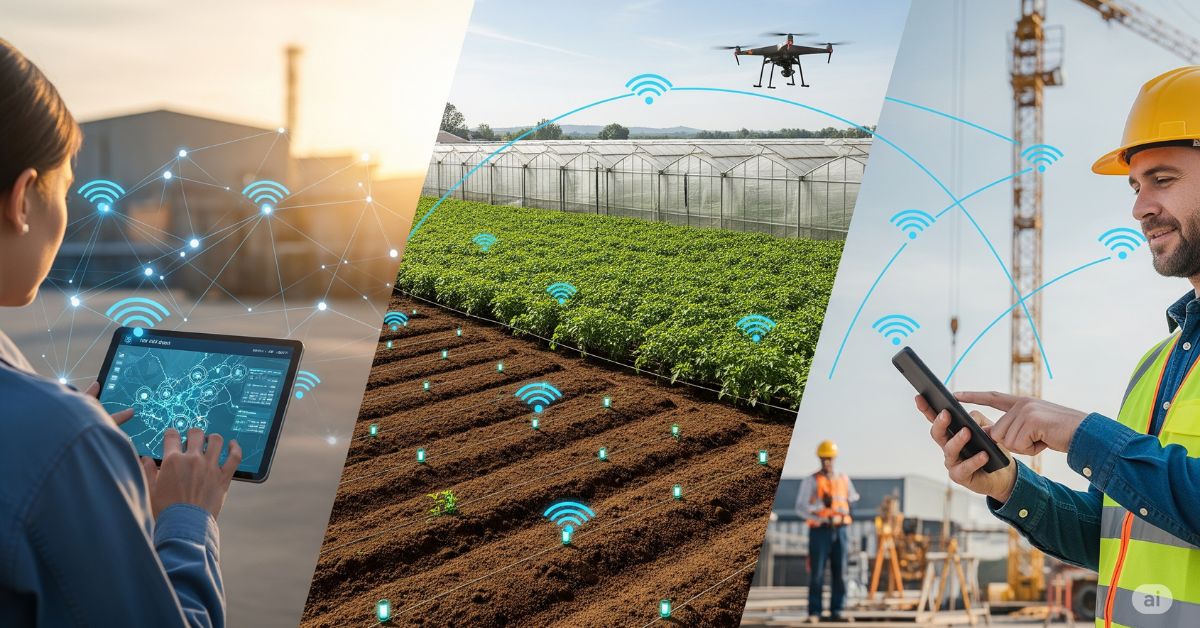There’s so much Talk about IoT, but What Benefits Can IoT Actually Bring to My Business?
Organizations across various market segments have already begun their digital transformation and have realized numerous advantages. They use IoT to increase business value, improve decision-making, and operate more efficiently.
Asset Tracking
One of the greatest benefits of IoT is asset tracking (whether tools, equipment, or machinery). This tracking is done using sensors, and when connected to
Read: 10 Reasons to Use Effortech’s ICON ST Satellite Terminals
Efficiency
The more devices connected to the internet, the smarter IoT makes your company, allowing for reduced operational costs and real-time insights that help create action plans to reduce maintenance downtime, inventory, and time-to-market.
Protection and Security
The integration of IoT with sensors and cameras allows the workplace to be monitored to ensure the safety of equipment and workers. This can alert professionals for quick resolution of threats before they become real problems.
Increased Productivity and Cost Reduction
Profitability is directly related to productivity. With IoT, it’s possible to offer just-in-time training for employees, thereby increasing work efficiency and reducing disharmony, increasing productivity, and consequently reducing costs.
Understanding the concepts and benefits of IoT, we can see its application across various segments.
Main IoT Applications in Various Segments
Agriculture
In the field, IoT can be applied in various ways: in precision agriculture, when used with sensors, control systems, robotics, autonomous vehicles, automated hardware, and variable rate technology, it is defined as the technology that makes agricultural practice more precise and controlled using information technology. In livestock monitoring to collect data on the location and well-being of cattle, identifying sick animals to be separated from the herd. In the use of drones that allow real-time images of crop health and time savings, and in smart greenhouses to increase the yield of vegetables, fruits, and crops. These greenhouses control environmental parameters through manual intervention or a control mechanism.
Read: IoT in Agriculture
Smart Buildings and Public Safety
In smart buildings, IoT can reduce energy costs by monitoring temperature, lighting, and, if necessary, turning air conditioning on and off. When sensors are used, it’s possible to detect when there are people in the room and use the system described above.
In public safety, IoT can improve response time for first responders during an emergency and provide alternative route options for them, as well as monitor vital signs of victims or firefighters in life-threatening locations.
Homes and Healthcare
Smart homes are equipped with thermostats and heating appliances as well as lighting and other devices that are connected to each other and can be controlled remotely. In healthcare, IoT allows patients to be monitored in real-time, as well as the management of medications and medical instruments.
Successful IoT Project
For an IoT project to be successful, efficient data collection alone is not enough. The mere act of connecting devices and collecting data is insufficient, and companies that limit themselves to just this are the first to fail in their IoT projects. In addition to data collection, there are other factors that need to be considered to ensure the success of your project.
The first step is to have organized data collection, guided by real business needs (not just collecting for the sake of collecting, at random). By collecting data with purpose, with a pre-established objective, it’s possible to perform intelligent analyses and obtain valuable insights.
The second step is to verify what your client’s expectations are regarding the project and what you can actually offer. A mismatch between the product vision and actual expectations and results can become a challenge to overcome. There are no limits to imagination. Based on this phrase, there are many cases where the client’s requirements are quite vague or even unrealistic. Therefore, all solutions and expectations should be investigated, analyzed, clarified, and made clear to avoid major complications.
The third step is to keep in mind that a well-thought-out, comprehensive, and far-reaching strategy takes time. With the evolution of IoT and market technologies, a solution that is good enough today may well be outdated tomorrow. That’s why it’s important to plan solutions with a vision for the future; keeping up with the turns of the technology industry will help you be prepared for the unexpected.
The fourth step is to find great service providers. Make sure the provider strives to go beyond and learn more about the exact requirements of your project, that they offer quality, the possibility of integration between platforms, reliability, and technical support. Don’t just aim for price, after all, no one likes to be thrown into the deep end and abandoned in trouble, right?
The fifth step is to seek inspiration! When you develop your project and know exactly what you want, you can look for inspiration, check similar solutions already developed, and seek guidance from your service provider to expand the possibilities of your product or process.
Do you have any questions? Talk to one of our consultants now! Effortech has a highly qualified team to guide you on the best telemetry solutions in the market

